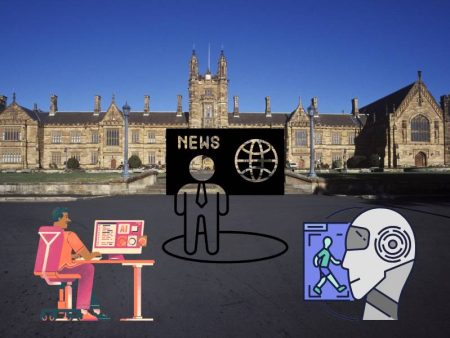You know that weird moment when Google seems to know exactly what you want—sometimes before you do? Yeah, that magic (or creepy) bit behind the screen is heavily tied to how content gets written and validated. Lately, AI detection tools are not just whispering in the background—they’re shouting, “This piece is human!” or “Alert: AI-generated!” And guess what? That’s reshaping how people plan, produce, and polish content for marketing and SEO.
Stick around. We’ll unpack how this AI-detection wave is changing our game—in a good way, promise. We’ll talk strategy, ethics, and even some business real talk. Oh, and I’ve dropped in a few tools worth knowing about along the way.
The Content Minefield: AI Creates, Humans Authenticate
Let’s be real: AI can spit out blog posts in minutes. But can it make them read well? Capture emotion? Evoke real trust?
That’s where detection tools like the AI Content Detector come in. These aren’t just fun toys—they’re becoming essential quality checkpoints. Publishers and brands are feeding their work through detectors to validate authenticity. It’s like adding a badge of “human-approved” to your words.
But hijacking AI simply to crank out content? It’s no longer cutting it. SEO algorithms—and real people—can smell generic, formulaic copy. The result? Low rankings, low engagement, and a big fat “meh” from readers.
SEO and Authenticity: The Unexpected Love Story
Here’s a twist: detectable authenticity = SEO gold.
Google wants genuine value. Not auto-generated walls of text loaded with keywords. Clever repetition patterns, unnatural transitions, or bland “AI tone”? Those might ring alarms at both AI detectors and Google’s algorithm.
But when content feels real—raw anecdotes, imperfect grammar, personality in every line—it performs better. Why? Because people stay. They engage. They read, comment, share—exactly the signals Google loves.
Also… have you tried the AI Text Detector Unlimited Words? It scans massive documents, giving you a probability score anywhere from “hand-crafted” to “likely machine.” Some pros now pre-scan their drafts to ensure they’re hitting the sweet spot of naturalness and depth.
Simpler, Smarter Content Strategy
Before AI detection tools, our approach was “create as much as possible.” Now it’s getting smarter:
- Use AI to draft, not to dominate.
Let AI generate outlines, rough copy, or headline ideas… but write the actual sections yourself. Infuse your voice. Add real-world context. Share metaphors that mean something to you. - Validate with humanizer checks.
Running your draft through something like the AI Text Detector And Humanizer ensures it won’t trip the algorithm. And hey—it helps highlight places that feel formulaic. - Spot check before publishing.
Even if you trust your own edits, a quick test with a detector can surface “AI-like” sections you might’ve missed. Better safe than penalized, right?
But Won’t Everyone Just Game the System?
Here’s the rub: as detection gets smarter, so does the temptation to outsmart it. Bots trying to mimic glitchy sentence patterns. Humanizers doing funky rewording to evade flags. It’s like passing a lie detector… in heels.
The truth? Platforms want quality. Users want honest, useful content. Algorithms reward it. So your best bet isn’t tricking the system — it’s playing along.
I had a client push back on adding personal stories in a product page. “It’s too emotional for our voice,” they protested.
I replied, “But that’s the content people actually remember.”
They caved. And you know what? That page now ranks and gets clicks.
Non-Linear Thinking Saves the Day
Look, SEO used to be about bulletproof guides: keywords, format, length rules. Now innovation in how you structure content—using quizzes, decision trees, or interactive narratives—can set you apart.
Why? Because AI-generated text isn’t always great at “non-linear storytelling.” It can be repetitive. Predictable. Lacking personality.
So we see smart creators weaving in dialogue, anecdotal jumps, unfinished thoughts—basically, celebrating imperfection. That doesn’t just pass detectors—it engages humans.
Empathy-as-SEO: Caring Counts
Algorithms aside, there’s still a human reading your content. Someone who’s stressed. Curious. Late-night Googling.
Brands that show empathy. Who address concerns, admit uncertainty, go beyond marketing-speak—they win loyalty. High rankings follow engagement, which follows empathy.
“We’re sorry our product didn’t work for you” goes farther than bland apologies. Same with vulnerability—calling out mistakes builds trust.
That goes double when paired with genuine, solid advice. Authentically human plus helpful = SEO gold.
The Real Impact on Teams and Tools
Marketing teams used to be structured like:
- Writer
- Editor
- SEO specialist
- Maybe a developer
Now we’re adding AI strategists, detector specialists, and content validation roles into the mix. Drafters use AI. Editors use detectors. SEO pushes non-linear formats.
And tools are evolving fast. Integration with Google Docs, CMS plugins, real-time feedback in your editor window—it’s wild. What used to take rounds of revisions is now a matter of a quick “detect” click before publish.
But Nothing Beats an Actual Human
Let’s not pretend AI detection tools run the show. They assist, they highlight, but we still need judgment, nuance, context.
Ever read a flagged text that clearly feels alive? Yeah, me too. And that reminds us: these tools aren’t infallible.
At the end of the day, readers engage with humans. We connect with real opinions. Real stories. Real mistakes.
If we lean entirely into AI to work at us, we lose. Lean into AI to support us, we win.
Final Thoughts (From a Real Person)
So yes—AI detection is reshaping content marketing and SEO.
- It’s pushing us away from generic output.
- Forcing us to own our voice.
- Demanding empathy, imperfection, story shapes.
- Elevating people who write real, care deeply, and innovate structure.
But don’t get spooked. This shift is a win—for creators and audiences.
Think of AI detectors like feedback: not bosses, but advisors. Use them to sharpen your clarity. Not to bulldoze your voice.
And if you ever feel like your writing is becoming “too perfect,” ask yourself: would you want to read it?
If not, go add the messy story. Show your scars. Be human.
Because in the era of AI detection, that might just be our most powerful SEO strategy yet.
Your Turn
Have you tried any detection tools? Scored high and felt honest? Or scored low and thought, “What the heck?”
Drop your experience below. Let’s trade war stories and real help—no AI script can beat that.
—A human with typos, coffee breath, and SEO dreams.


